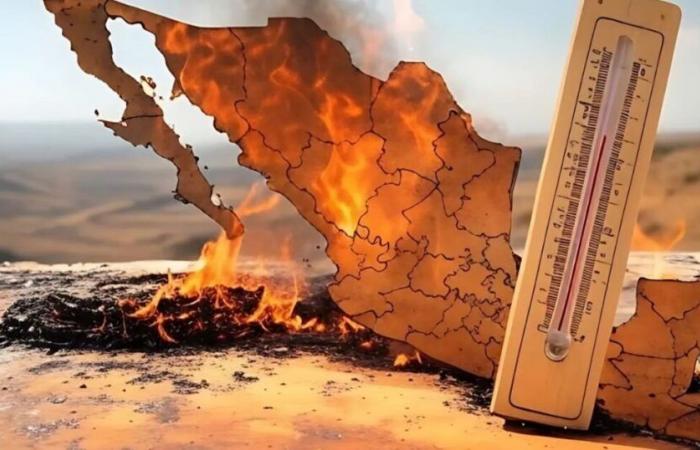A recent report by the National Aeronautics and Space Administration (NASA) warned about the effects of Climate change in Latin Americapointing out that, if the current trends of global warming, A country in the region could become practically uninhabitable in the next decades due to
Extreme heat
.
What country is it and in what year the consequences will begin to be experienced? In adn40 We explain to you.
Subscribe to us
WhatsApp channel
y Take the information in the palm of your hand.
What is the humid bulb?
Las Heat waves Not only have they become more frequent, but also more intenseand the risks they represent for human health They are already among the main concerns of the scientific and medical community. This concern is because the Thermal stress Figure as one of the Most common causes linked to climate. In fact, extreme episodes have doubled in the last four decades, and everything indicates that this trend will continue to increase.
This was confirmed Colin Raymondresearcher of NASA Laboratory Propulsion Jet and main author of the study
Too Hot to Handle
which analyzes the Effects of extreme heat and humidity. In his research, Raymond points out that one of the key indicators to determine if a place is habitable is the so -called temperature of “wet bulb”that combines both the ambient temperature and moisture levels to assess the ability of the human body to cool.
What is the maximum temperature at which the human can survive?
According to Raymond, the maximum temperature of the “wet bulb” to which a human being can survive abroad during At least six hours is about 35 degrees Celsius (95 degrees Fahrenheit).
What country will be uninhabitable in 2070 for extreme heat?
Brazilthe largest country in South America, faces a Critical future Due to the increase in extreme temperatures and moisturethat They could make some of its regions in 2070 uninhabitable. According to the study, the increase in global warming and thermal stress, measured through the index of “wet bulb “couldn exceeds the limit of human survival in certain areas of the country.
The most vulnerable areas are found in Tropical and subtropical regions of the north and Brazilian northeastincluding states like Amazonas, Roraima, Mato Grosso and Bahiawhere they have already registered Heat waves with temperatures greater than 40 ° C in 2025. These extreme episodes seriously affect agriculture, livestock and the quality of life of millions of people, in addition to putting public health at risk due to the increase in
Heat and dehydration blows
.
Climate change affects the economy and makes products more expensive
[VIDEO] In 2024 coffee became 40% more expensive due to climatic factors such as climate that affect coffee production. 20 million farmers were affected by pests.
The report emphasizes that The combination of high temperatures and humidity hinders the thermal regulation of the human bodyincreasing the risk of heat -related diseases.
NASA points out that The climatic crisis in Brazil It is a reflection of the global impact of climate change, mainly driven by burning fossil fuels and deforestation, which raise greenhouse gas levels. However, experts underline that there is still room to act through emission reductionthe Ecosystems protection and the Implementation of climate adaptation policies that can mitigate these consequences.
What other areas will be uninhabitable for extreme heat?
NASA points to the most vulnerable areas around 2050 are South Asia, the Persian Gulf and the Red Sea. To these will be added the east of China, parts of Southeast Asia and Brazil Towards 2070.
DNA40 always with me.
Subscribe to our Telegram channel
And carry the information in your hands.





